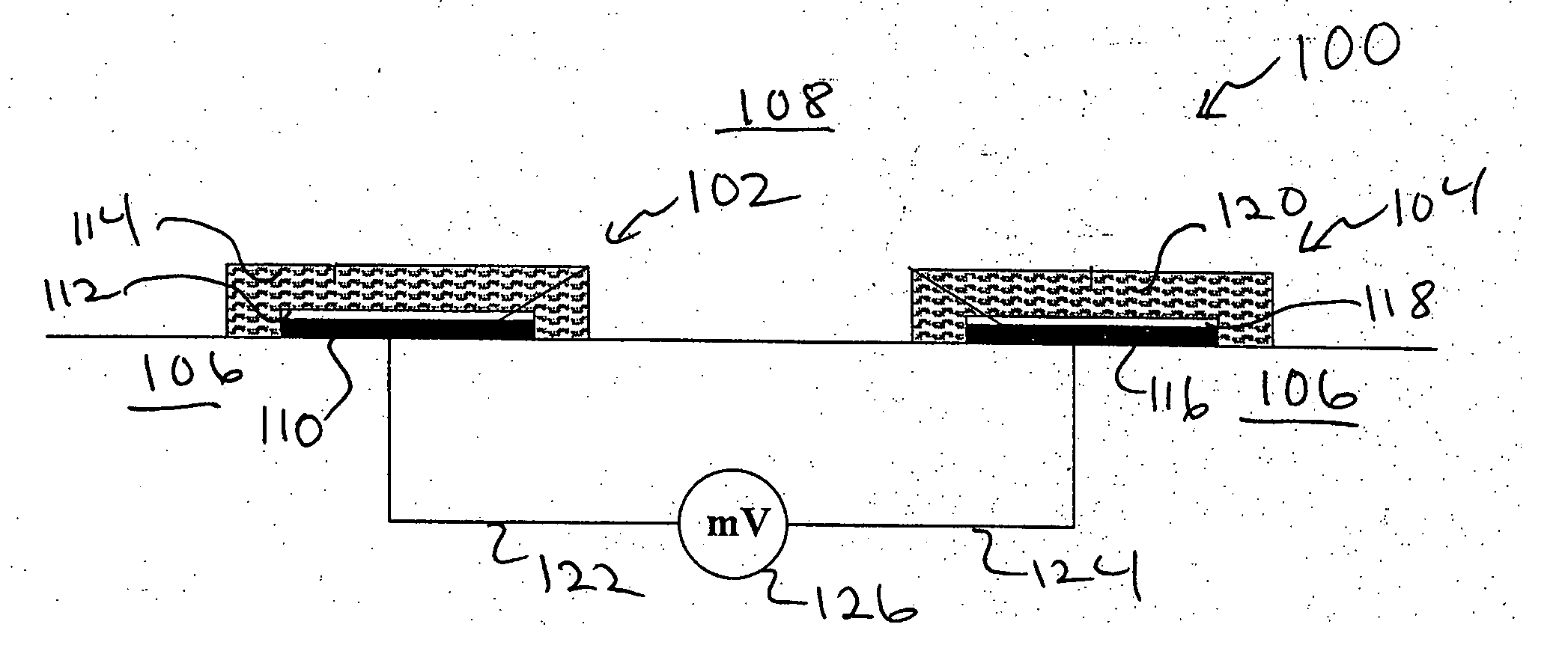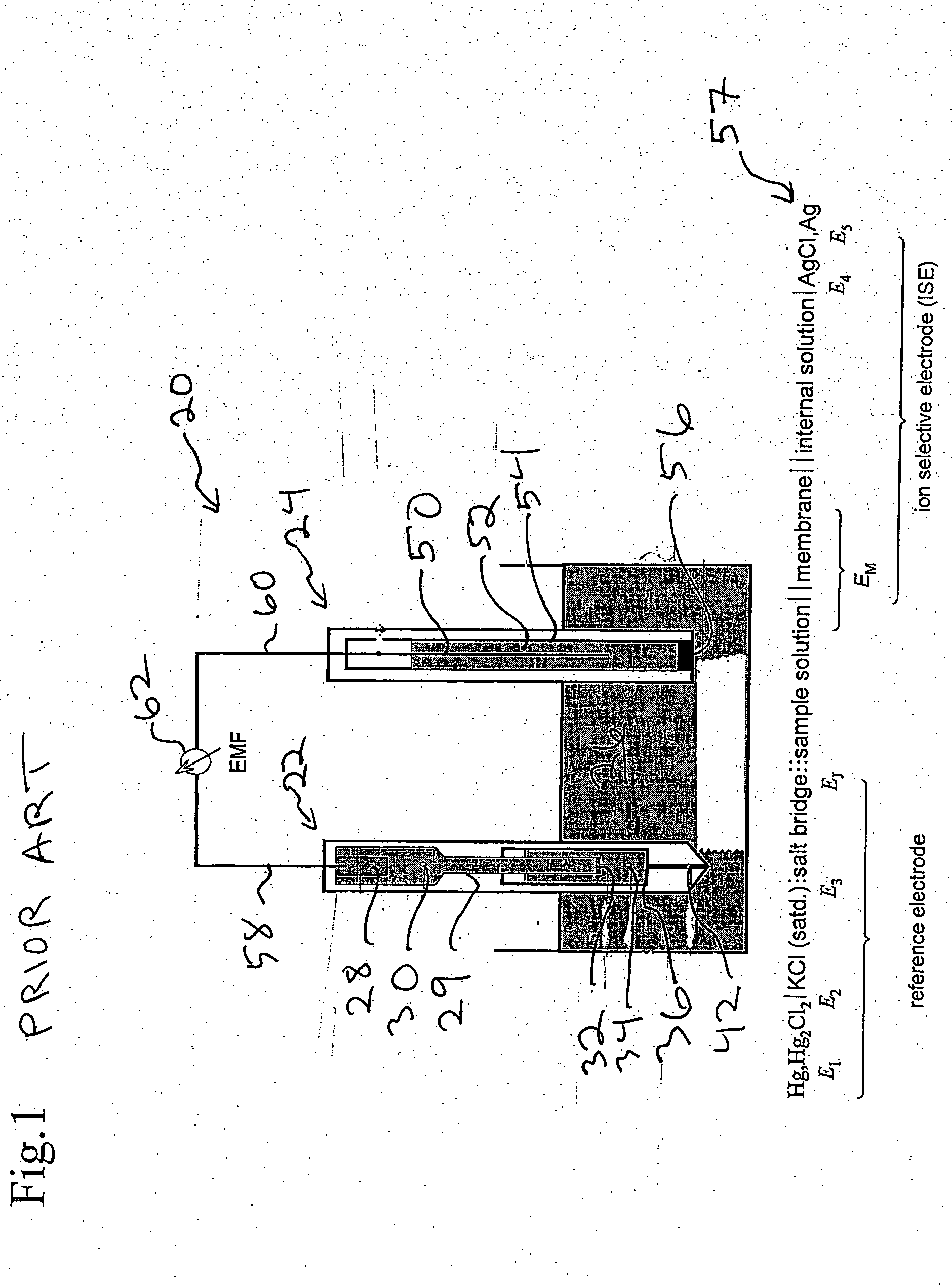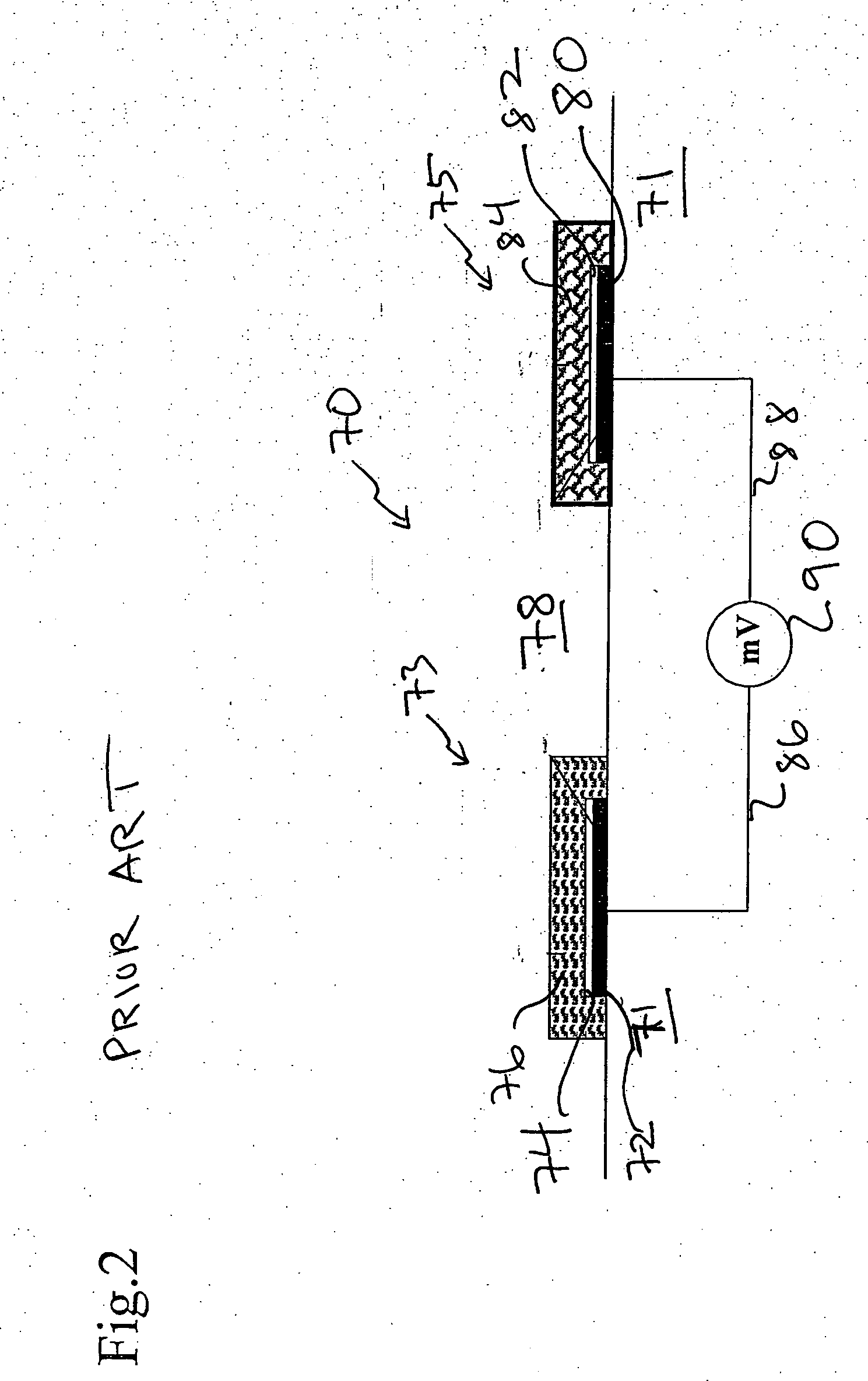Ion sensor for long term use in complex medium
a long-term use, complex technology, applied in the field of ionselective electrodes, can solve the problems of cardiac arrest, sudden death, weaker heart, etc., and achieve the effect of constant reference electrode potential
- Summary
- Abstract
- Description
- Claims
- Application Information
AI Technical Summary
Benefits of technology
Problems solved by technology
Method used
Image
Examples
example 1
Potassium Ion-Selective Solid-State Electrode Based on Polymer Type II with Immobilized 15C5 Evaluated under Constant Exposure of 0.1 M KCl Polyhema Layer:
[0134] hydroxyethyl methacrylate=6 mg [0135] 2,2-dimethoxy phenylactophenone=1 wt % [0136] Duration of UV irradiation=10 minutes [0137] Conditioned in KCl for 2 hours [0138] Composition of photocured membrane (total weight 26 mg): [0139] n-butyl acrylate=83.9 wt % [0140] methyl methacrylate=12 wt % [0141] AAB 15C5=2.5 wt % (in 90 μl THF) [0142] potassium tertakis (p-chlorophenyl borate)=0.3 wt % (8.6 mole %) [0143] 2,2-dimethoxy phenylacetophenone=0.9 wt % [0144] UV exposure time=40 minutes [0145] measured polymer Tg
example 2
Potassium Ion-Selective Solid-State Electrode Based on Polymer Type II with Entrapped Valinomycin Polyhema Layer
[0146] hydroxyethyl methacrylate=3 mg [0147] 2,2-dimethoxy phenylactophenone=1 wt % [0148] Duration of UV irradiation=7 minutes [0149] Conditioned in KCl for 2 hours [0150] Composition of ion-selective membrane (total weight 15 mg): [0151] n-butyl acrylate=96 wt % [0152] hexanediol diacrylate=0.09 wt % [0153] valinomycin=2.1 wt % [0154] potassium tertakis (p-chlorophenyl borate)=0.59 wt % (60 mole %) [0155] 2,2-dimethoxy phenylacetophenone=1 wt % [0156] UV exposure time=7 minutes [0157] measured polymer Tg=−42.6° C.
example 3
Sodium Ion-Selective Solid-State Electrode Based on Polymer Type II with Entrapped Sodium Ionophore IV Polyhema Layer
[0158] hydroxyethyl methacrylate=3 mg [0159] 2,2-dimethoxy phenylactophenone=1 wt % [0160] Duration of UV irradiation=7 minutes [0161] Conditioned in NaCl 0.1 M for 2 hours [0162] Composition of ion-selective film (total weight 11 mg): [0163] n-butyl acrylate=94.7 wt % [0164] hexanediol diacrylate=0.11 WT % [0165] 2,2-dimethoxy phenylacetophenone=0.72 wt % [0166] Na ionophore IV=4.3 WT % [0167] sodium tertakis (trifluorophenyl borate)=0.22 wt % (9 mole %) [0168] Duration of irradiation=8 minutes [0169] measured polymer TG=−42.6° C.
PUM
 Login to View More
Login to View More Abstract
Description
Claims
Application Information
 Login to View More
Login to View More - R&D
- Intellectual Property
- Life Sciences
- Materials
- Tech Scout
- Unparalleled Data Quality
- Higher Quality Content
- 60% Fewer Hallucinations
Browse by: Latest US Patents, China's latest patents, Technical Efficacy Thesaurus, Application Domain, Technology Topic, Popular Technical Reports.
© 2025 PatSnap. All rights reserved.Legal|Privacy policy|Modern Slavery Act Transparency Statement|Sitemap|About US| Contact US: help@patsnap.com



